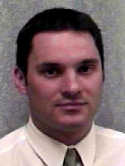Feasibility of a novel surface-guided setup technique to reproduce neck curvature using two regions of interest Journal Article
| Authors: | Li, G.; Yu, V.; Ryan, K.; Gil, M.; Biancia, C. D. |
| Article Title: | Feasibility of a novel surface-guided setup technique to reproduce neck curvature using two regions of interest |
| Abstract: | Purpose: To improve the setup reproducibility of neck curvature using real-time optical surface imaging (OSI) guidance on 2 regions of interest (ROIs) to infer cervical spine (c-spine) curvature for surface-guided radiotherapy (SGRT) of head-and-neck (HN) and c-spine cancer. Methods: A novel SGRT setup approach was designed to reproduce neck curvature with 2 ROIs: upper-chest ROI and open-face ROI. It was hypothesized that the neck curvature could be reproduced if both ROIs were aligned within ±3 mm/2 ̊ tolerance. This was tested prospectively in 7 volunteers using real-time 3D-OSI guidance and lateral 2D-photography verification after the 3D and 2D references were captured from the initial conventional setup. Real-time SGRT was performed to align chest-ROI and face-ROI, and the longitudinal distance between them was adjustable using a head-support slider. Verification of neck curvature anteriorly and posteriorly was achieved by overlaying edge-extracted lateral pictures. Retrospectively, the relationship between anterior surface and spinal canal alignment was checked in 11 patients using their simulation CT (simCT) and setup cone-beam CT (CBCT). After the anterior surface was rigidly aligned, the spinal canal alignment was checked and quantified using the mean-distance-to-agreement (MDA) and DICE similarity index, and surface-to-spine correlation was calculated. Results: The reproducibility of neck curvatures using the 2xROI SGRT setup is verified and the mean neck-outline-matching difference is within ±2 mm in lateral photographic overlays. The chest-ROI alignment takes 110 ± 58 s and the face-ROI takes 60 ± 35 s. When the anterior body surface is aligned (MDA = 1.1 ± 0.6 mm, DICE = 0.96 ± 0.02,) the internal spinal canal is also aligned (MDA = 1.0 ± 0.3 mm, DICE = 0.84 ± 0.04) in 11 patients. The surface-to-spine correlation is c = 0.90 (MDA) and c = 0.85 (DICE). Conclusion: This study demonstrates the feasibility of the novel 2-ROI SGRT setup technique to achieve reproducible neck and c-spine curvature regardless of neck visibility and availability as ROI. Staff training is needed to adopt this unconventional SGRT technique to improve patient setup. © The Author(s) 2024. |
| Keywords: | adult; clinical article; aged; middle aged; validation process; reproducibility; reproducibility of results; image analysis; radiotherapy; pathology; diagnostic imaging; simulation; feasibility study; head and neck cancer; feasibility studies; head and neck neoplasms; imaging, three-dimensional; neck; radiotherapy planning, computer-assisted; stereotactic procedure; head and neck tumor; image reconstruction; cone beam computed tomography; cone-beam computed tomography; cervical vertebrae; cervical spine; image guided radiotherapy; procedures; visibility; radiotherapy, image-guided; three-dimensional imaging; humans; human; male; female; article; radiotherapy planning system; optical surface imaging (osi); surface guided radiotherapy; surface-guided radiotherapy (sgrt); cervical vertebra; neck disease; cone-beam ct (cbct); head-and-neck (hn) cancer; sgrt patient setup; reproduce neck curvature |
| Journal Title: | Technology in Cancer Research & Treatment |
| Volume: | 23 |
| ISSN: | 1533-0346 |
| Publisher: | Sage Publications, Inc. |
| Date Published: | 2024-01-01 |
| Start Page: | 15330338241271946 |
| Language: | English |
| DOI: | 10.1177/15330338241271946 |
| PUBMED: | 39109645 |
| PROVIDER: | scopus |
| PMCID: | PMC11307372 |
| DOI/URL: | |
| Notes: | The MSK Cancer Center Support Grant (P30 CA008748) is acknowledged in the PubMed record and PDF. Corresponding MSK author is Guang Li -- Source: Scopus |
Altmetric
Citation Impact
BMJ Impact Analytics
MSK Authors
Related MSK Work







